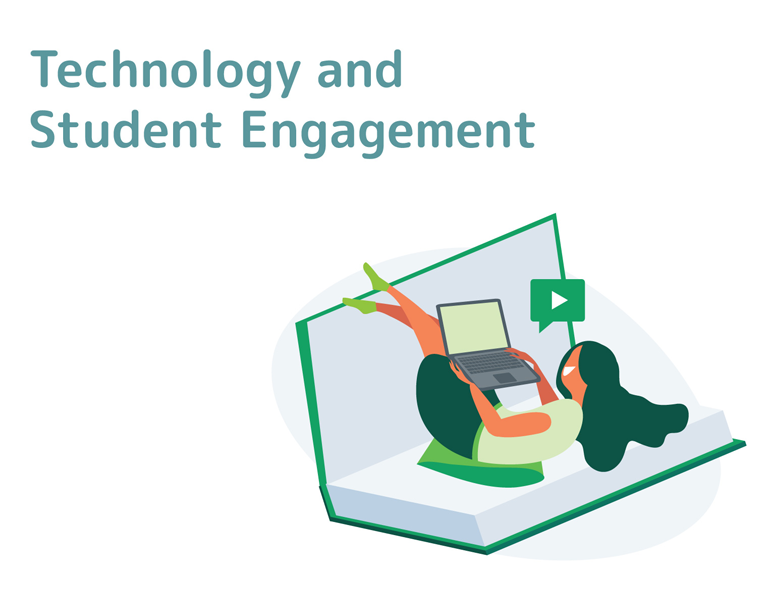
Watching our students entranced by laptop screens and using every spare second they possess to glance at their phone, we often ask ourselves:
How does technology engage young people so deeply, and with such ease?
The answer is more complex than you might think. But it’s one we have to understand if we want to engage students with technology for meaningful learning.
Here’s what the research says about how technology engages students. Put it to use in your classroom so you can stop competing with your students’ technology and start benefiting from it.
Technology connects students with the wider world
Technology gives our students a connection to the world — not an escape from it.
It lets our students see global issues come to life, form lasting relationships, and experience feelings as rich and real as anything day-to-day life can deliver.
This means technology can help us deliver authentic learning opportunities: ones that connect with the real world beyond the classroom walls.
Here are a few ideas to get you started:
- Language students could communicate with native speakers via internet forums or through email pen pals.
- Students could share projects on social media to get real feedback from an authentic audience.
- Students could communicate with people in other countries to get new perspectives on world issues.
- Class work could be collated on a blog that’s shared with family and friends.
The best part of authentic learning with technology?
Next time a student asks “When am I ever going to use this?” you won’t have to scramble for a hypothetical post-school scenario.
You can tell them they’re using it already.
Technology gives students a sense of community and belonging
Technology is a social tool. Just look to the stats — 45% of the world’s population uses social media daily, and an average of three hours a day is spent scrolling through our feeds.
And for some of our students, three hours is probably a light session. Because when they use social media, they’re doing more than just chatting with friends.
They’re getting the sense of belonging and community that young people crave.
We can use technology to bring the same connectedness into our classrooms by:
Creating a digital home base for the class community
Use a class blog or Wiki to bring everyone together. It can serve as a “newsfeed” for class updates and activity as well as a showcase of student work. Unlike the classroom wall, a digital platform makes it possible for students to share multimedia projects such as videos or podcasts.
Staging online collaborative activities
Encourage digital collaboration with discussion boards, cloud documents, or live communication tools such as Zoom and Skype. This gives students an opportunity to connect outside the tightly managed 15 minutes you might have for regular group work, and it’s a safe space for the introverts who don’t speak up in class.
Using social media
As part of a project students could promote their work via Facebook or Instagram, or use Twitter to research the thoughts and opinions of real people. Don’t worry if you’re unfamiliar with it — they’ll be more than happy to show you the ropes!
Technology makes things easier
Our students have been born into a world where technology makes everything easier, faster, and available on demand.
No wonder they struggle to engage with clunky textbooks, stacks of paper, and worksheets that turn to confetti after being carted around for weeks on end.
We can use technology to streamline our students’ learning and make it easier. Show them how to:
- run a spellcheck for more accurate work
- create a useful search query
- assess web sources for reliable information
- name and save their work as easily accessible files.
You make learning easier to engage with and build the technological literacy they’ll need for life after school.
Technology is forever new
The “digital natives” label has us fooled into thinking students have seen it all and done it all already when it comes to technology.
Technology is constantly giving our students new things to learn, and they love it. They’ll spend days getting to grips with new video games or mastering the ins and outs of a must-have app.
Make the most of this engagement by encouraging students to trial and master new technologies in the classroom. You don’t have to swap curriculum content for coding, but you might encourage students to try Canva next time they’re preparing yet another PowerPoint, or swap textbook learning for a gamified program like Mathletics or Reading Eggs.
An important note
There’s one question you need to ask before you bring technology into your classroom.
Does it contribute to student learning?
Because the best technological strategies do more than just engage. They drive classrooms of curiosity where learning is brought off paper and into life.
Need help finding meaningful and engaging technology for your classroom?
We’ve got you covered. Read up on the benefits of technology in the classroom and explore our range of gamified learning programs for mathematics, literacy, and science.
Sources
Herrington, J & Kervin, L, Authentic learning supported by technology: 10 suggestions and cases of integration in classrooms. Educational Media International, 44(3), 219-236
Downes, J M & Bishop, P, Educators engage digital natives and learn from their experiences with technology. Middle School Journal, May 2012
The Myth of the ‘Digital Native’ – University of Sydney
What are Gen Z’s Social Media Preferences? – The Center for Generational Kinetics
10 Social Media Statistics You Need to Know in 2020 – Oberlo










